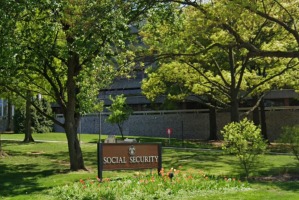Flocking to 'Other Christianities:' Like Seagulls to Trash Piles
In October 2012, I talked about a Smithsonian Channel documentary that examined a fourth-century papyrus fragment in which Jesus purportedly refers to His "wife."
At the time, I noted that even if it weren't a blatant forgery, there was ample reason to be skeptical about what the fragment purported to tell us.
Well, now the fragment is back in the news, and not only is skepticism about the fragment itself still warranted, but we should also ask ourselves what lies behind the continuing interest in the fragment and similar documents.
When the discovery of the document was announced, scholars pointed to "grammatical errors," its "resemblance to other gospels" and even "inconsistencies with traditional Egyptian Coptic script" which called the fragment's authenticity into question.
Earlier this month, the Harvard Theological Review published a series of articles claiming that the fragment wasn't a forgery, and instead, "probably dated from between the sixth and ninth centuries and might be even older," the mostly likely date being around 859 A.D.
Mind you, that's at least four centuries after what the historian Karen King first claimed. Which also puts it four to five centuries after the various ecumenical councils that defined Christian orthodoxy.
Yet, King insists that "we can turn away from the question of forgery and talk much, much more about the historical significance of the fragment and precisely how it fit into the history of Christianity and questions about family and marriage and sexuality and Jesus."
Leo Depuydt of Brown University disagrees. In a companion piece to Brown's in the Review, he wrote that there is "not the slightest doubt (those are his words) that the document is a forgery, and not a very good one at that." He reiterates early objections to the fragment and insists that none of them has been satisfactorily addressed.
To him, the text is "surreal," and he wonders how "something so patently fake could be so blown out of proportion."
Well, with respect to professor Depuydt, the answer is easy: The fragment is what people like King and Hal Taussig, who worked on the fragment with her, want to find-they need it to be real. Even if analysis of the ink, which is still pending, were to show that the text was written with a Sharpie, the fragment would still have its defenders.
That's because the fragment allows them to talk about "Christianities," plural, and "questions about family and marriage and sexuality and Jesus." Father James Martin, who is known to many Americans from his appearances on the Colbert Report, told the Washington Post that "funnily enough, people who are quick to accept the veracity of this" are the same people who question the veracity of biblical accounts, including the resurrection.
The debate over this fragment or other extra-biblical texts isn't really about what people in the third or fourth centuries believed-it's about what people in the 21st century want to believe. Insisting that there were many "Christianities" prior to the Council of Nicea is a way of saying that there can be many "Christianities" today-with many beliefs about the core doctrines of the faith, from marriage to the sanctity of life, to the very resurrection of the Lord Himself.
That's why scholars took to the "Jesus's Wife" fragment and various so-called "gospels" like, well, seagulls to trash piles. That's why Taussig can insist, as the Washington Post put it, that the fragment is "ostensibly as important as documents that make up the accepted New Testament."
No matter when it was written or with what.





























